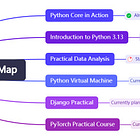Data Integration: These Giants Have a Total of 2 Billion Followers?(Practical Data Analysis 7)
Explore data integration concepts and tools like ETL, ELT, and SeaTunnel for efficient big data management. Learn how to enhance data accuracy, synchronization, and mining.
Welcome to the "Practical Data Analysis" Series
For example, imagine you're a producer of an online variety show with 12 episodes planned, featuring 30 celebrities as guests.
These celebrities are highly influential, and their follower counts on platforms like Weibo are well-documented.
You want to calculate their collective influence and determine how many Weibo users they can reach directly. To your surprise, the total follower count exceeds 2 billion.
Does that mean they can collectively influence 2 billion people in China?
Obviously not. China’s total population is 1.4 billion, so the combined influence of these 30 celebrities won’t cover the entire population.
How, then, can we accurately calculate their true collective influence?
This is where the concept of data integration comes in.
What is data integration?
Data integration involves merging multiple data sources into a single storage system (e.g., a data warehouse) to facilitate subsequent data mining tasks.
It’s estimated that 80% of work in big data projects revolves around data integration. This encompasses a broad range of tasks, including data cleaning, extraction, integration, and transformation.
Before data mining, the data we need often resides across various sources. Factors like differing field expressions or redundant attributes must be considered.
Two Data Integration Architectures: ETL and ELT
Data integration is a key responsibility of data engineers.
Typically, their work involves both ETL processes and the implementation of data mining algorithms. Algorithm implementation can be understood as finding “gold” in a data warehouse through data mining techniques.



